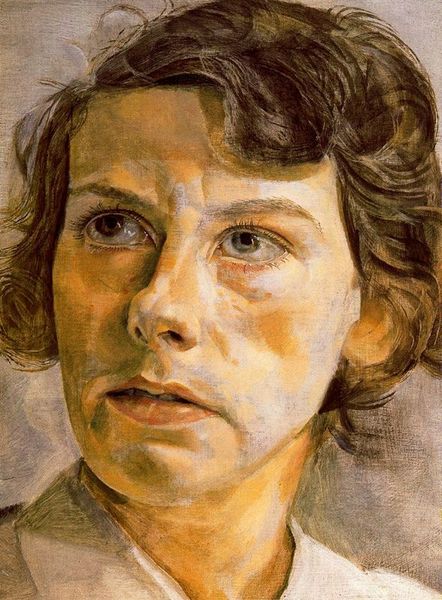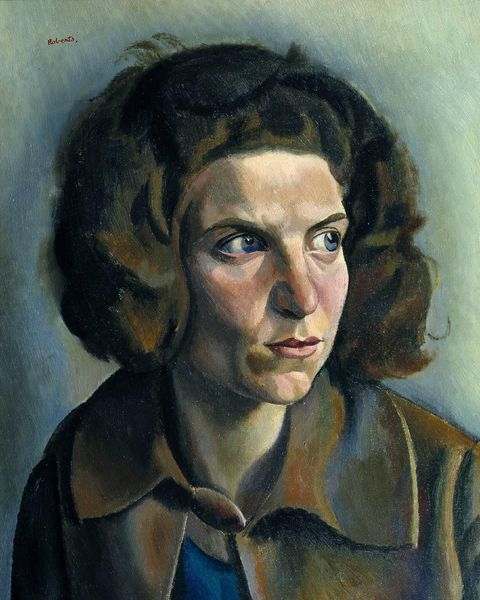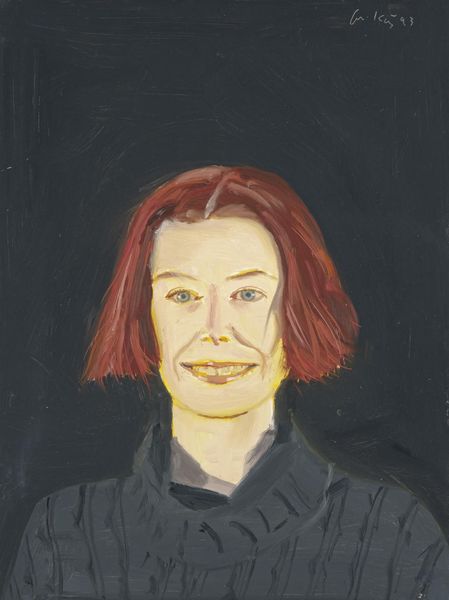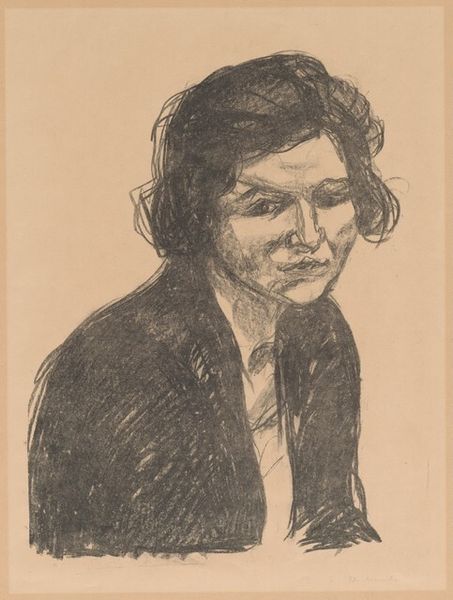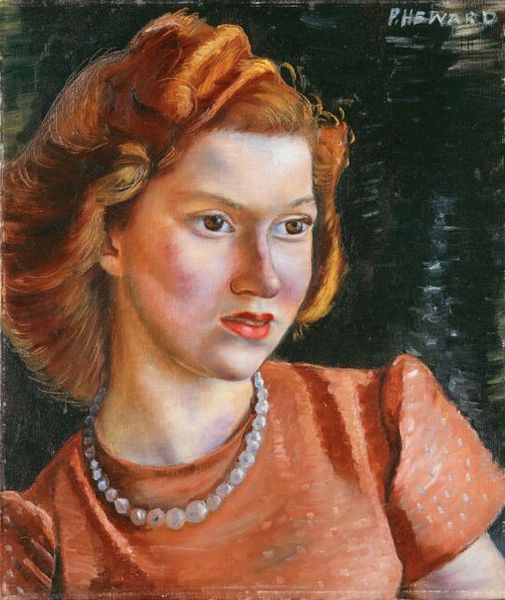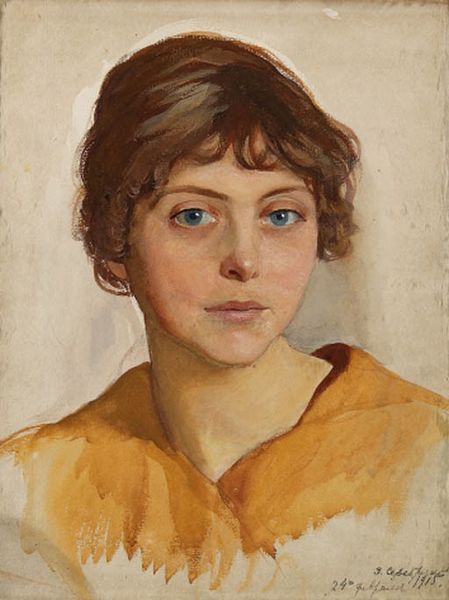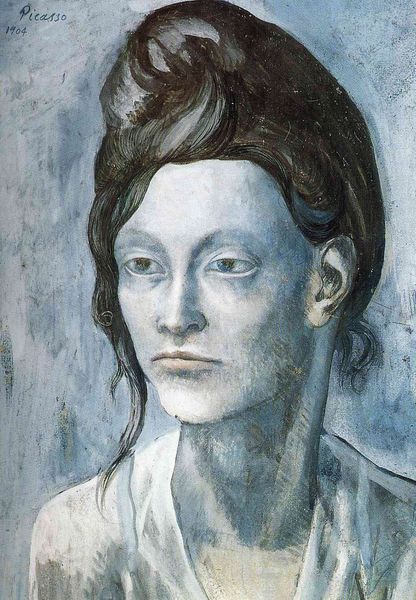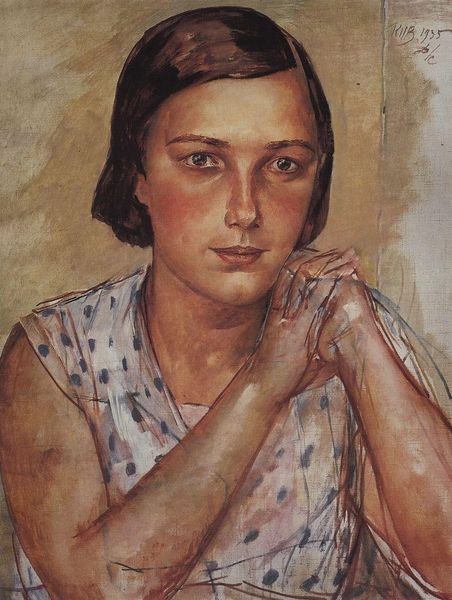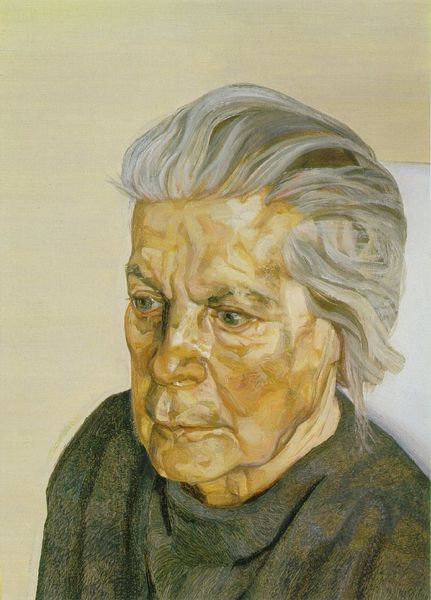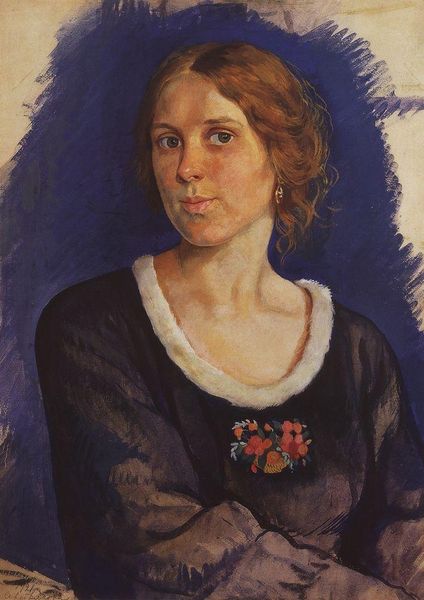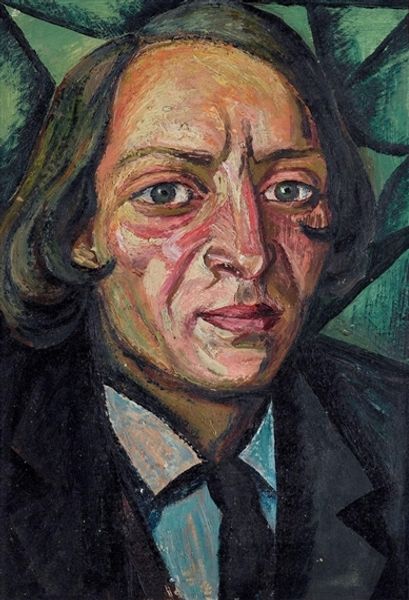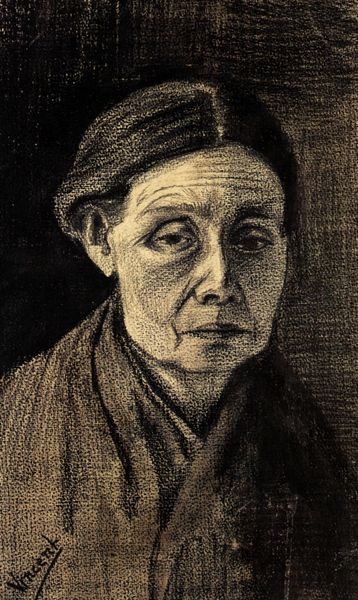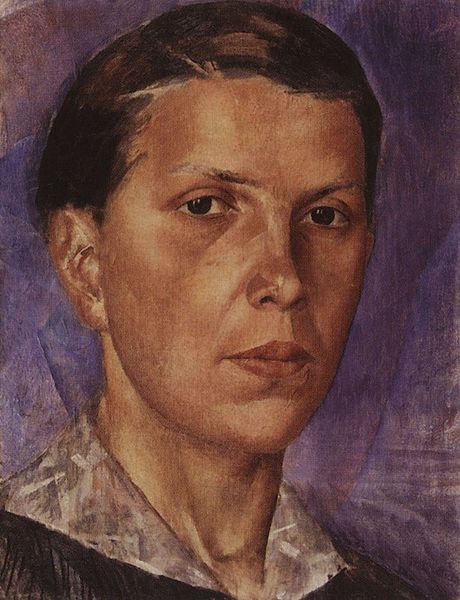
painting, oil-paint
#
portrait
#
head
#
face
#
painting
#
oil-paint
#
school-of-london
#
portrait reference
#
portrait head and shoulder
#
animal portrait
#
animal drawing portrait
#
portrait drawing
#
facial study
#
facial portrait
#
forehead
#
portrait art
#
female-portraits
#
modernism
#
fine art portrait
#
realism
#
digital portrait
Dimensions: 30.5 x 40.6 cm
Copyright: Lucian Freud,Fair Use
Curator: Lucian Freud's "Girl in a Dark Dress" painted in 1951. The portrait resides in a private collection. Editor: Austere. Almost unforgiving in its directness. The tight crop and muted palette focus everything on her gaze. Curator: Freud was deeply concerned with accurately portraying the human figure, particularly in the aftermath of the war. His portraits reflect a changing understanding of the self within a changed world. Editor: Yes, and notice how the texture enhances this feeling. Look at the brushstrokes in the skin, particularly around the eyes and forehead. It's built up, layered, creating a sense of weight, almost strain. Curator: Freud, along with artists like Francis Bacon, helped redefine British figurative painting after World War II. Their work turned away from the ideal and instead toward the rawness and instability of lived experience. They saw themselves as being part of "The School of London". Editor: The somber tones of the girl's dress against the cool background, frame and enhance the delicate modeling of her face. This contrast focuses us upon the psychological dimension of the portrait. The eyes become key in our attempt to understand what’s “at stake” within the subject. Curator: Consider the social context as well; Britain in the early 1950s was still recovering from the war. These portraits spoke to anxieties about identity and societal values. It captures a period that attempted to return to normalcy. Editor: The way he renders light, it feels almost clinical. Everything is revealed, unflinchingly. One can almost hear the scraping of his brush on the canvas. The material properties are emphasized to contribute to the overall composition. Curator: Indeed. When viewing Freud, it is difficult to avert your gaze. The artwork prompts one to reflect on societal and existential conditions. It seems relevant now as it did then. Editor: A powerfully disconcerting image; the artist transforms paint into raw emotional experience. This direct connection with our sensory world marks our experience as both unforgettable and profound.
Comments
No comments
Be the first to comment and join the conversation on the ultimate creative platform.
